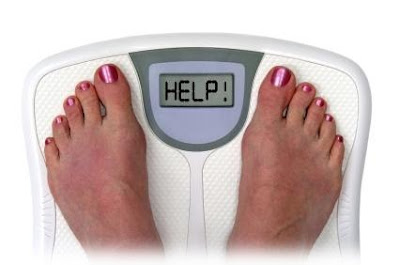http://www.aswellas.co.nz/our-services/shake-it-professional-weight-management-programe/ and
http://www.healthyweightforum.org/eng/articles/glycemic-index/
No part of the notes have been changed. I copied the articles to understand what GI is all about and disseminate this information to friends and relatives. Your body has three main sources of energy. It can burn fat, glucose (carbohydrate), or protein. When we burn fat, we produce substances called ketones. These are produced normally, and when we measure these ketones in our urine, we know we are burning fat efficiently.
High levels of dietary carbohydrates, also known as high glycaemic load foods (e.g. sugars and starchy foods such as bread, rice, pasta and potatoes), work with the hormone insulin to ‘switch off’ fat burning and increase fat gain.
It becomes virtually impossible to lose fat if you have raised insulin levels.
When your body’s blood sugar and insulin levels are low enough you will switch to a higher level of fat burning.
To burn fat you need to restrict high glycaemic load foods to a level where your body will produce less of the hormone insulin thereby increase the rate of fat burning. Eating less food is not the answer; you need to specifically reduce the high glycaemic index, carbohydrate-rich foods in order to ‘switch on’ fat burning.
The Glycemic Index
About the Glycemic Index
The Glycemic Index (GI) relates to the way your body’s sugar levels respond to certain foods. Foods are given a rating from 0 –100 on the glycemic index with glucose in the highest position. High Glycemic Index foods (such as simple carbohydrates) will increase the body’s sugar levels rapidly whereas low glycemic index foods will increase the body’s sugar levels slowly. A good understanding of the glycemic index can assist in weight loss and help control diabetes.
How Does the Glycemic Index work?
The glycemic index is complicated and cannot be generalised to all people. Different people will have different reactions to food. The body’s response to food will relate to several factors including; age, activity level, insulin levels, time of day, amount of fibre and fat in the food, how refined (processed) the food is, and what was eaten with the food. In addition to this, other factors such as the ratio of carbohydrates to fat and protein as well as how the food was cooked (eg. Boiled compared to fried or baked) and metabolism will determine the way your body’s sugar level responds after eating. Foods that have a low glycemic index will have little effect on the body’s sugar levels. Comparatively, foods that have a high glycemic index will have an instant affect on blood sugar levels. Ratings on the glycemic index have resulted from numerous studies; however, individuals should test their own reactions to food in relation to the glycemic index.
The Glycemic Index and Food
Foods low on the glycemic index will release glucose gradually into the blood stream whereas foods high on the glycemic index will provoke an immediate response in the blood sugar levels. Foods that contain carbohydrates are usually high on the glycemic index and have the greatest effect on blood sugars. Pasta dishes, bread and potatoes are usually high on the glycemic index. The composition in the carbohydrate will also affect how the body’s sugar levels react. For example, white bread will rate high on the glycemic index whereas wholegrain or rye bread will be rate lower on the glycemic index as it contains more grains and contains complex carbohydrates. Examples of low glycemic foods are breakfast cereals (which are based on wheat bran, barley and oats), wholegrain break, fruit, lentils, soybeans, baked beans etc. Examples of high glycemic foods are white bread, soft drinks, full fat ice-cream, chocolate bars etc.
The Glycemic Index and Dieting
Health experts and dieticians contest that the glycemic index is difficult to use because it is complicated and will vary from person to person. They do concede however, that the glycemic index is a useful meal-planning tool especially when individuals monitor their own individual responses to foods. Low glycemic food is especially helpful in assisting those who want to lose weight. Low glycemic index foods will increase the sugar levels in the body to sustain energy levels for longer periods of time. This means an individual will feel less inclined to eat because energy is being slowly released into their bloodstream. A good understanding of the glycemic index will also assist with exercise. If you exercise then eating high glycemic foods will help you recover from your workout. Specifically, faster carbohydrates that are high on the glycemic index are great for raising low blood sugars after intense exercising whereas low glycemic index foods are helpful in maintaining blood sugar levels for long periods of exercise. Health experts encourage using the glycemic index in conjunction with other meal programs to assist in managing diabetes and/or controlling weight.
Below is a glycemic index foods list. The glycemic index foods list shows the food category and also the glycemic index for each particluar food in that category.
White bread 70
Wholemeal bread 69
Pumpernickel 41
Dark rye 76
Sourdough 57
Heavy mixed grain 30-45
Lentils 28
Soybeans 18
Baked beans (canned) 48
Cornflakes 84
Rice Bubbles 82
Cheerios 83
Puffed Wheat 80
All Bran 42
Porridge 46
Mars Bars 65
Jelly beans 80
Chocolate bar 49
Apple 38
Orange 44
Peach 42
Banana 55
Watermelon 72
Milk, full fat 27
Milk, skim 32
Icecream, full fat 61
Yogurt, low fat, fruit 33
Fanta 68
Gatorade 78

